Animalia
Winter moth
Operophtera brumata
Andreja Kavčič
|
|

Fig. 1. Operophtera brumata male
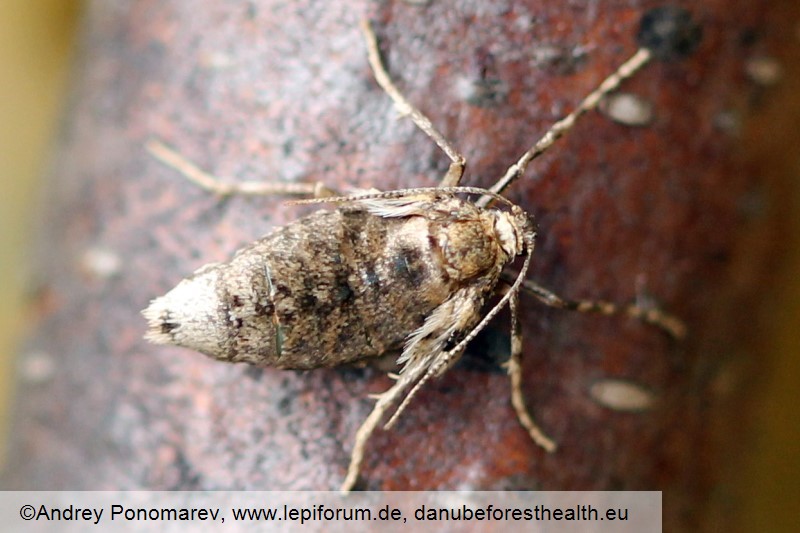
Fig. 2. Operophtera brumata female
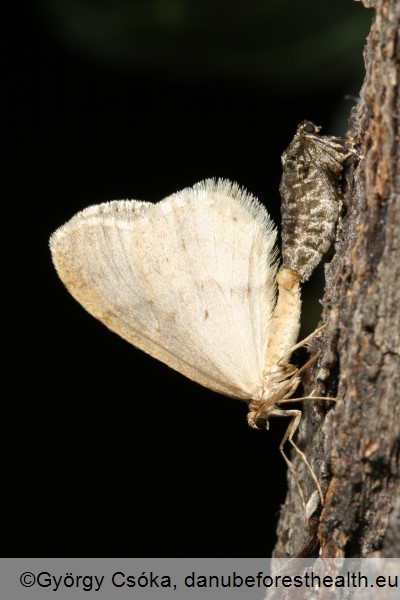
Fig. 3. Operophtera brumata copulation
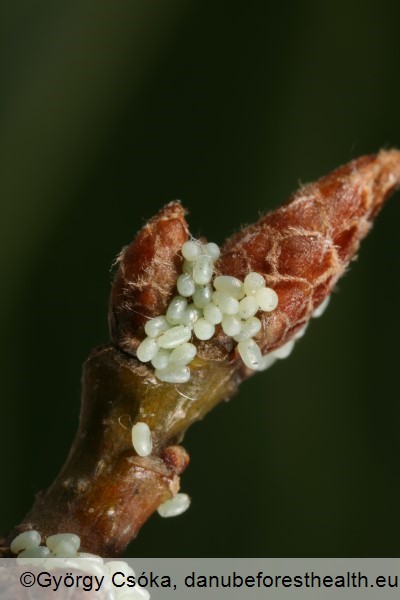
Fig. 4. Eggs
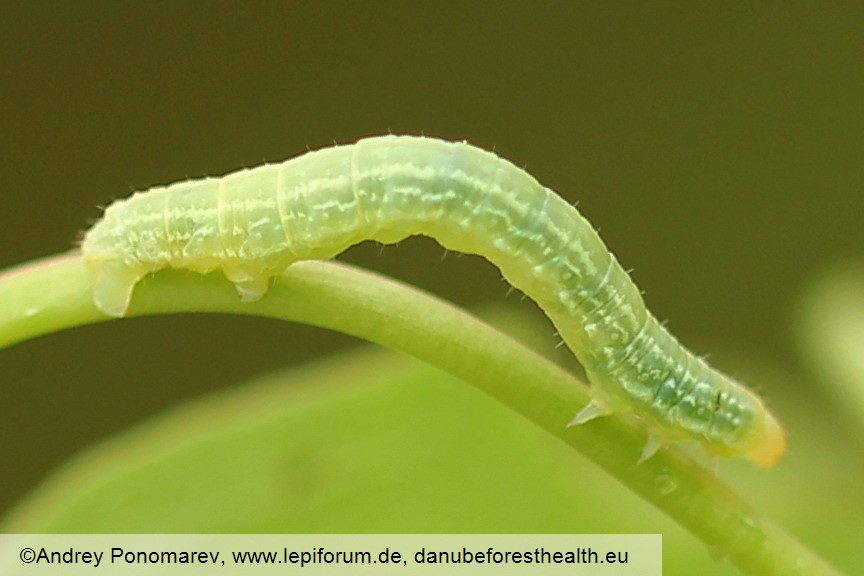
Fig. 5. A winter moth larva

Fig. 6. Operophtera brumata pupa
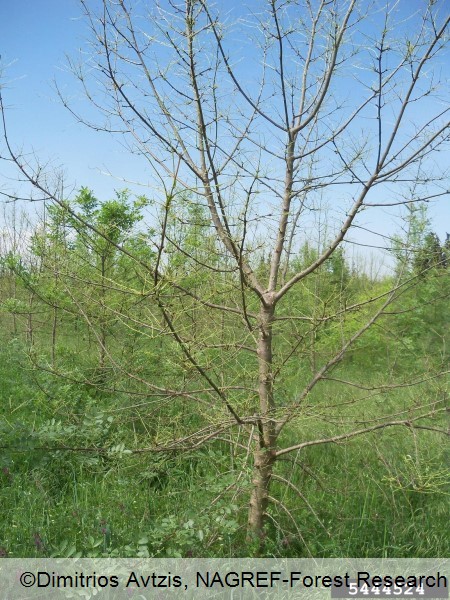
Fig. 7. Defoliation caused by Operophtera brumata larvae
DETECTION PERIOD:
March – December, eggs can be seen on and around buds in January and February
DESCRIPTION:
Adults are grey moths that fly from late October to the beginning of December – hence the name. Males have well developed wings with a wingspan of 25–30 mm. Females have reduced wings with the wingspan of 6–7 mm and are flightless. The winter moth has one generation per year. Late in the autumn, males and females emerge from the pupation site in the ground to mate, usually on the tree trunk. Mated females wander to the canopy and lay eggs on twigs in the vicinity of buds. Eggs overwinter. Larvae hatch in March when the leaves start to grow. Larvae are hairless, pale green, with light yellow longitudinal and transverse lines. Caterpillars feed on buds and leaves from April to June. They consume the leaf lamina between the neighboring leaf veins, which results in perforations and later defoliation. Fully grown larvae are 20 mm long. Larvae produce thin silky threads that they use to tie together the leaves to make a shelter. Also, caterpillars hanging on the thread can avoid predators or be transported by the wind to a new host. In June, larvae drop to the ground and burry themselves 5–20 cm deep in the soil where they pupate in a cocoon.
HABITAT:
The winter moth can be found in natural habitats, nurseries, plantations and urban areas. It prefers humid locations. Operophtera brumata is polyphagous on a wide range of broadleaved trees, such as Salix spp., Prunus spp., Quercus spp., Fagus spp., Tilia spp., Betula spp., Ulmus spp., Acer spp., Carpinus spp., Malus spp., Pyrus spp., Prunus spp..
STATUS:
The winter moth is widespread in Europe, including the ReFOCUS area, and in temperate regions of Asia. It was introduced to North America.
IMPACT:
Larvae cause damage by defoliating broadleaved trees. In forests, the winter moth frequently occurs with other early defoliators.
SIMILAR SPECIES:
The winter moth can be confused with the northern winter moth, Operophtera fagata, as the two species have very similar morphology, ecology, and they cause similar damage.
|